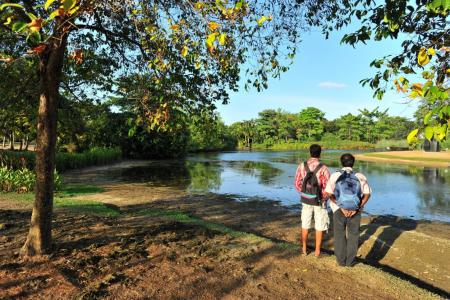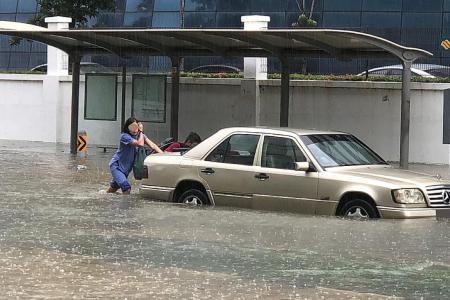S’pore must take on climate change: PM Lee
Strategies are being looked at to protect the island from rising sea levels
Singapore cannot avoid taking on a major threat to the country's existence: climate change.
Sea levels will rise, posing a grave danger to the low-lying island, said Prime Minister Lee Hsien Loong last night at the National Day Rally.
The only question is when. He estimates it will cost $100 billion or more, over 100 years, to protect the country against rising sea levels.
Singapore is already experiencing some of the effects of climate change, including more intense rainfall and prolonged dry spells.
By 2100, it could see a rise in daily mean temperatures by as much as 4.6 deg C, and more extreme and intense weather, which could threaten water, food and energy supply.
PM Lee noted that current projections are that sea levels will rise by up to 1m by the end of the century, but scientists’ estimates have been going up.
Professor Benjamin Horton, chair of Nanyang Technological University’s Asian School of the Environment, said that to mitigate flood risk from sea level rise, potential solutions must support the long-term resilience and sustainability of communities and the environment. This, he said, requires robust accurate local projection of sea-level rise.
“Singapore must invest in the science of sea level rise. Science first, responsible, cost-effective adaptation follows.”
Much of Singapore lies only 15m above the mean sea level, with about 30 per cent of the island less than 5m above it.
The Centre for Climate Research Singapore has found that in the rare scenario of high mean sea levels, high tide and high surge occurring at the same time, sea levels could rise almost 4m above the current mean and overwhelm the island’s low-lying coastal areas.
PM Lee said the centre is working with its counterparts in neighbouring countries to study in greater detail how climate change is affecting the region.
“They are finding that Singapore, being near the equator, is more vulnerable to climate change than the global model suggests,” he added.
PM Lee said the Republic is considering major engineering works to tackle rising sea levels.
Strategies being looked at include carrying out empoldering, a land reclamation technique, along Singapore’s eastern coast, as well as reclaiming a series of offshore islands there.
These strategies could have other benefits for Singapore, such as boosting the nation’s water security and increasing land availability.
Reclaiming a series of offshore islands from Marina East to Changi could, for example, help increase Singapore’s water resilience, said Mr Lee.
“(We could) connect them up with barrages and create a freshwater reservoir, similar to Marina Reservoir. National water agency PUB will like this solution, because it will enhance our water resilience.”
Polders built along Singapore’s eastern coastline could also protect the Republic from sea-level rise in a way that would allow it to gain more land as well.
Polders are tracts of land that lie below sea level. They are constructed by first building a dyke around the area to be reclaimed and then draining water from it. Water levels in the polder are controlled by drains and pumps.
“(This is) new land which we can use for housing and other purposes,” Mr Lee said.
Get The New Paper on your phone with the free TNP app. Download from the Apple App Store or Google Play Store now




